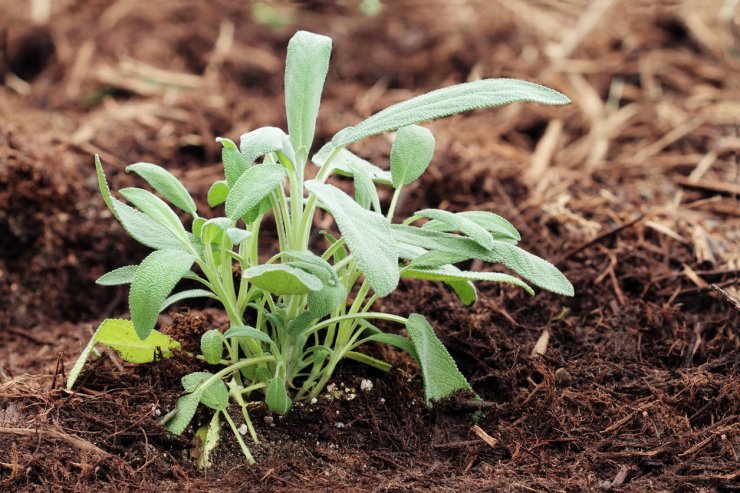
Sage in loamy soil
Healthy sage plants start with planting them in the right soil. Sage thrives in well-drained, sandy, loamy soil. If growing in a container, consider putting a layer of pebbles in the bottom to encourage drainage. Sage is one plant that doesn’t require rich compost or mulch—keep in mind this herb is native to the dry, rocky Mediterranean area. When it comes to sage, it’s better to have a less lush plant with strong flavor and aroma than one with prolific leaves and blooms but little taste.
Sage is one of the few plants that prefers to play with vegetables rather than its fellow herbs, other than rosemary. So, plant it in the main garden, or at the edge of the herb garden near the vegetables. Sage will benefit these other plants by keeping away pests, attracting pollinators when it flowers, and enhancing the other plants’ flavors.
Because sage is a bushy plant that will spread, be sure to give it plenty of space of its own. But you can plant these nearby:
- Brassicas plants
- Carrots
- Rosemary
- Strawberries (sage enhances flavor)
- Tomatoes
And here is a list of plants to keep away from your salvia:
- Alliums (these plants love moist soil not suitable for sage)
- Cucumbers (sage can stunt cucumbers’ growth)
- Fennel (can stunt sage’s growth)
- Rue (will inhibit sage’s growth)
- Wormwood (can harm sage)
What type of soil do you use to grow your sage? What are your best tips for creating optimal soil for your sage? Please share your techniques with us.


 Previous
Previous


Does sage discourage or deter varments (skunks, raccoons, rabbits) and cats?